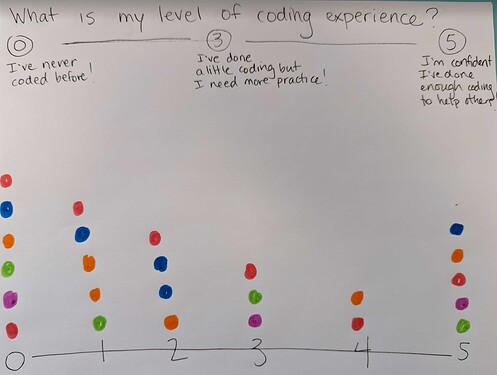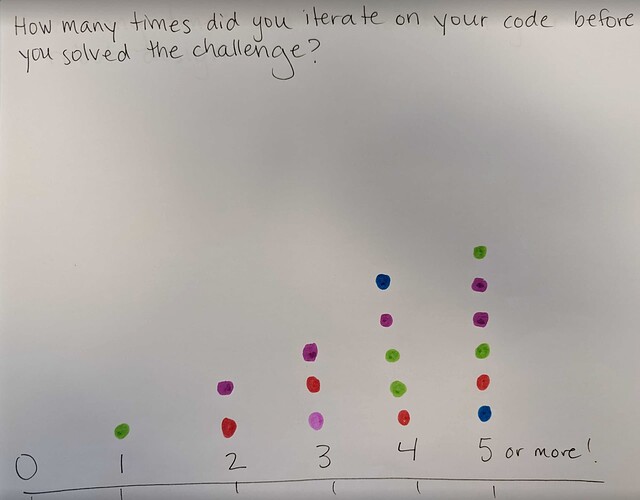Audra Selkowitz and I were lucky enough to attend SXSW EDU last week, and one topic that had a lot of buzz was Data Literacy. We attended a fantastic session about using data to build empathy, and it got me thinking about different ways to incorporate SEL into robotics using data.
Of course, you could use data students are collecting in engineering notebooks to build data literacy skills in some engaging ways, but what about intentionally collecting data to use to build empathy in robotics class? Could you use data to build stronger collaboration skills in your students?
One idea that popped into my head was to begin a new robotics class with group data collection and use it to promote team building and confidence. For example, you could ask students about their level of coding experience (excuse the quick and not very neat mock-up drawings)
Then you can have a conversation with your students about what it means -
- Students on the 0 to 1 side of the class can see they are not alone, and many students will be learning to code for the first time in this class, making them feel more comfortable and more likely to contribute to their groups.
- Students on the 4-5 side are primed to be ready to share their knowledge with their peers - you can task them with this responsibility!
- All students can see that there is a wide range of confidence with coding in their class - and that all responses are fine - everybody’s different, and learning together.
You could even follow it up with a question about students’ level of coding confidence - it is likely the data would correlate and show that those with more experience are more confident, and that’s a great teachable moment about the value of practicing!
You could also use data collection as a way to prompt a meaningful debrief conversation after students have completed a coding or engineering challenge. You could collect some data on a question like this one as a way to emphasize persisting through challenges:
When students can see how many tries it took other groups to solve a problem, they can see that everyone has to try more than once and that grappling with difficult problems requires persistence. A carefully crafted discussion can emphasize this, along with how students can support each other as they persist through challenges.
Of course, it is important to have the kind of classroom environment where students can answer these kinds of questions honestly, otherwise this kind of data collection isn’t going to be effective.
I’m sure there are hundreds of other great ideas for using data as an SEL tool in robotics - these were just two quick ideas that occurred to me. I’m definitely looking forward to continuing to think about this topic. What about all of you? Does this post spark any ideas for you, or are you already using data in this way? Share your ideas with us!


